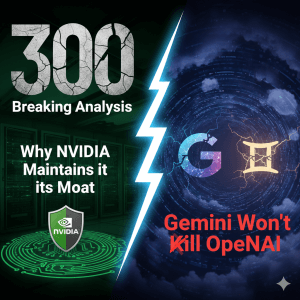Artificial intelligence (AI) adoption is accelerating rapidly across industries, moving from experimental pilots to enterprise-wide initiatives that span the edge, data center, and wide-area networks. With this shift, the role of the network is evolving from a supporting utility to a strategic enabler of AI-driven transformation.
At the recent Networking for AI Summit, I spoke with Dan DeBacker, Senior Vice President of Product Management at Extreme Networks, about how enterprises can modernize their networks to meet the demands of AI workloads while simplifying operations.
Networking as an AI Enabler
DeBacker emphasized that AI is changing how organizations think about infrastructure:
“AI is making networking sexy again. It used to be just the plumbing, a necessary evil. Now it’s an enabler.”
Traditional workloads created steady, predictable traffic patterns, but AI shifts the dynamic. Organizations must now backhaul massive volumes of data from the edge into data centers and the cloud for training and inference. At the same time, those same networks still need to support critical day-to-day applications like collaboration, CRM, and productivity tools. The result is a new class of highly distributed, data-intensive traffic patterns that require more adaptive, intelligent networks.
The Edge as a Foundation for AI
Extreme sees front-end wired and wireless networks as foundational for edge AI use cases in healthcare, manufacturing, and smart cities. Data is the “currency of AI,” and these access networks act as the entry points for capturing and feeding data into AI models.
Extreme’s long-standing investment in network fabric technology provides consistent performance, segmentation, and automation across the data center, campus, and branch. Coupled with high-performance Wi-Fi, including Wi-Fi 6E and 7, these networks enable organizations to securely and reliably support IoT devices, sensors, and end-user systems that generate the bulk of AI-relevant data.
“The more data AI has, the better it will perform. We’re pulling information not just from the network, but also from the end devices to correlate network health with device health,” said DeBacker.
Fabric as the Backbone for AI
Fabric networking is central to Extreme’s strategy. It provides microsegmentation, topology independence, and simplified operations, all critical for scaling AI workloads securely and efficiently. In healthcare, for example, new medical devices can be connected and automatically isolated from production environments without requiring additional firewall rules or manual intervention.
By extending fabric universally across the enterprise, from the data center to the branch, Extreme offers customers a unified architecture that reduces complexity and improves agility. This fabric foundation integrates with Extreme’s Platform ONE, a cloud-native platform powered by AI, enabling enterprises to consume AI capabilities through multiple modes, whether conversational AI, multimodal interfaces, or agentic AI workflows.
AI for Networking: Practical Gains Over Hype
While much of the focus is on networking to support AI workloads, Extreme is also applying AI to the network itself. DeBacker described the company’s approach as delivering “a thousand small gains” rather than a single leap to autonomous networking.
This includes automating repetitive troubleshooting tasks, correlating data across wired, wireless, and WAN infrastructure. It even includes pre-populating support cases with diagnostic data. Extreme’s incremental approach helps customers gradually build confidence and operational maturity.
“It’s not about replacing staff. It’s about taking a team of 20 and enabling them to work like a team of 50,” DeBacker explained.
Ethernet vs. InfiniBand for AI Workloads
On the ongoing debate of InfiniBand versus Ethernet for AI fabrics, DeBacker reinforced Extreme’s commitment to Ethernet. He highlighted Ethernet’s scalability, simplicity, and widespread enterprise expertise as key advantages.
“Ethernet has won the war over and over. Networking for AI can run across an IP fabric with VXLAN, EVPN, and RoCEv2, capabilities enterprises already know and use today.”
The familiarity of Ethernet lowers training requirements, simplifies staffing, and provides a more cost-effective, enterprise-friendly approach compared to introducing specialized technologies like InfiniBand.
Our ANGLE
Extreme Networks and its Platform ONE position themselves as providers of intelligent, fabric-based networks that simplify operations and scale AI across the enterprise. By focusing on practical, incremental AI-driven gains and leveraging Ethernet as a unifying fabric, the company aligns well with customer needs for efficiency, security, and adaptability.
As organizations advance their AI initiatives, networking will be central not only to moving data but also to shaping the outcomes AI can deliver. Extreme’s strategy of combining universal hardware, a pervasive fabric, and AI-enabled operations offers a pathway for enterprises to accelerate AI adoption without adding unnecessary complexity.
To learn more about Extreme Networks offerings, please visit their website.



